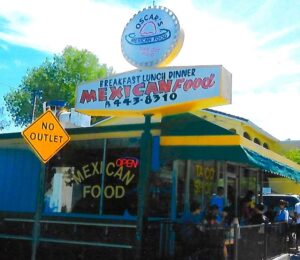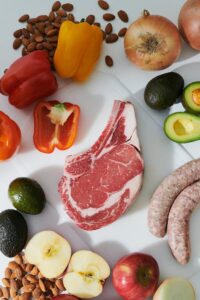Food grade hydrogen peroxide is a form of the chemical used for disinfection purposes in food production. It is regulated by the Food and Drug Administration (FDA) as an approved sanitizing agent that can be used on food contact surfaces, equipment, utensils, and packaging materials. Hydrogen peroxide helps to reduce bacteria levels in foods such as dairy products, meat, fruit and vegetables.
When it comes into contact with organic matter such as proteins or carbohydrates it breaks down into oxygen and water molecules which are harmless to humans. Food grade hydrogen peroxide must meet certain concentrations before being deemed safe for use in food production environments; typically ranging from 0-35% concentration depending on its purpose. It is also non-toxic when used according to label instructions making it an ideal choice for health conscious consumers looking for natural alternatives to harsh cleaning chemicals.
Food grade hydrogen peroxide is an incredibly versatile and useful household product that can be used for a wide variety of cleaning, disinfecting, and sanitizing tasks. It’s safe to use in food-contact surfaces such as kitchen counters, cutting boards, knives and other utensils. Additionally, it provides powerful oxidizing power which makes it great for killing germs like bacteria and viruses.
Hydrogen peroxide also offers natural whitening properties so you can use it to clean white fabrics or freshen up your grout lines without harsh chemicals.
Which Hydrogen Peroxide is Food Grade?
Hydrogen peroxide is a versatile chemical compound that can be used in many different ways. It is important to note, however, that not all hydrogen peroxides are created equal. Food grade hydrogen peroxide is intended for use as a food additive and should never be consumed directly or applied topically on the skin without being diluted first.
This type of hydrogen peroxide typically has a concentration between 3% and 6%, which makes it safe to use in recipes or other culinary applications such as washing fruits and vegetables when preparing meals. In addition to its utility in cooking, food grade hydrogen peroxide can also help purify water if added at the correct concentration levels as well as provide environmental benefits when used in wastewater treatment systems. It’s important to always purchase this type of product from an approved vendor who specializes in providing high quality ingredients for food production processes.
What is the Difference between 3% Hydrogen Peroxide And Food Grade Hydrogen Peroxide?
The difference between 3% hydrogen peroxide and food grade hydrogen peroxide is significant. The former is a household cleaning agent, often used as a disinfectant to kill germs and bacteria on surfaces; while the latter, also known as 35% H2O2, is much more concentrated and should only be handled with extreme caution due to its potential for causing severe skin burns or even death if ingested. 3% hydrogen peroxide contains water and stabilizers that make it safe enough to use around the home without any special protective gear.
Food grade hydrogen peroxide on the other hand is highly concentrated and must be diluted before use in order to avoid adverse reactions from contact with human skin or accidental ingestion. Additionally, food grade hydrogen peroxide can be used for various purposes such as fish tank maintenance, oral health care products like toothpaste or mouthwash, agriculture applications like pest control or soil treatment among many others.
Is 3% Hydrogen Peroxide Considered Food Grade?
No, 3% hydrogen peroxide is not considered food grade. Hydrogen peroxide is a chemical compound composed of two hydrogen atoms and two oxygen atoms (H2O2). It has many uses in industrial and home settings, however it can be toxic to humans if ingested.
The ‘food grade’ version of this compound contains a much lower concentration—usually around 35%, depending on the manufacturer—and is safe for consumption when diluted properly. This higher-concentration formula also breaks down quickly into harmless byproducts so that it does not linger in the body after ingestion. In contrast, 3% hydrogen peroxide has no such safety precaution built into its use; it must be handled carefully as any other type of hazardous material may contain harmful chemicals or contaminants.

Credit: sbnf.net
How to Dilute Food Grade Hydrogen Peroxide for Internal Use
If you are looking for a natural remedy to help improve your health, food grade hydrogen peroxide may be worth considering. This form of hydrogen peroxide is safe enough to take internally when diluted properly. To dilute the hydrogen peroxide, mix 3% food grade hydrogen peroxide with equal parts distilled water and then drink it slowly or with some juice.
It is important to remember that this should only be done under the guidance of a healthcare professional as improper use can lead to serious side effects.
Conclusion
In conclusion, food grade hydrogen peroxide is an amazing tool that can be used to improve the quality of your food and drinks. It is a natural disinfectant that has antibacterial and antiviral properties as well as being effective against mold, mildew and bad odors. It can also be used for many other purposes such as cleaning produce or removing stains from clothing.
With its versatility and safety when handled correctly, it makes a great addition to any kitchen or household!








